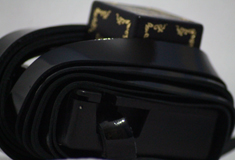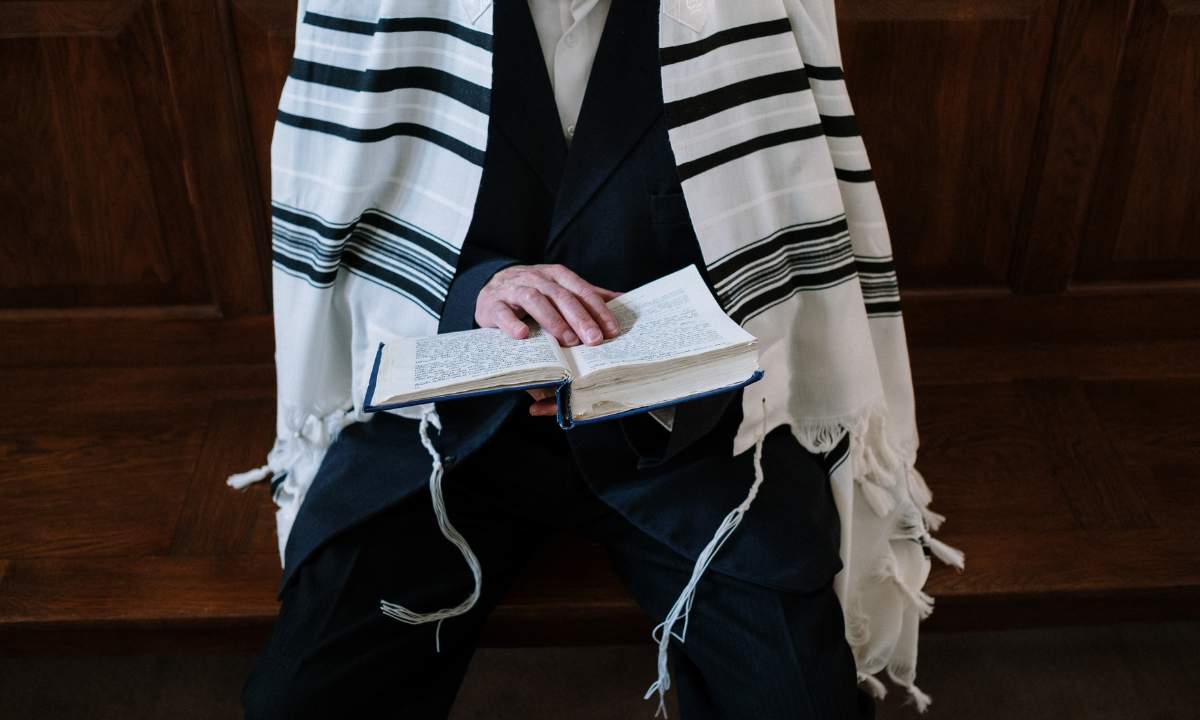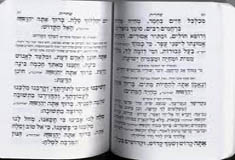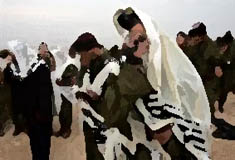Get to Know the tefilin Batim
הרב שי טחןטו טבת, תשפד27/12/2023Another Article in our Tefilin series... get to know the tfilin better
תגיות:תפיליןבתיםתפילה
Last Article, we began exploring the fundamental concepts of the construction of the Tefillin. We discussed Tefillin made from hides of both thin and thick-skinned animals. This week, our focus shifts to studying the names of the various components of the Tefillin, and understanding the distinctions among the slits of the head batim. The upper part of the Tefillin is called the “ketsitsa”. The lower part, extending from four sections of the upper part, is called the “titura”. The extension on the back of the Tefillin, through which the straps enter, is called the maabarta.
upper part of the Tefillin is called the “ketsitsa”. The lower part, extending from four sections of the upper part, is called the “titura”. The extension on the back of the Tefillin, through which the straps enter, is called the maabarta.
The slits of the head bayit are categorized as prudot, mostly prudot, mechuvanot, and finally, charutsot.
Here are the distinctions:
1. Prudot (Separated): This refers to batim where the slits are fully separated from each other. Each compartment is distinct and independent.
"Completely separated" batim describe the four partitions at the top of the head Tefillin compartment. These partitions are fully separated and distinct all the way to their base, lacking any adhesive connection between them to prevent separation.
Given that there are poskim who require the partitions to be completely separated without any adhesive, it is also crucial to ensure that the partitions do not stick together either due to their proximity or the presence of paint.
2. Mostly Prudot (Mostly Separated): In this case, the slits are mostly separated, but there is a connection between the two compartments at the bottom.(מחלוקת חי״א וחת״ס והכרעת הביה״ל ס״מ ד״ה חריץ)
3. Mechuvanot (aligned): The four partitions of the batim are separated by a sinew thread between each slit. In some batim, these threads are positioned inside the partitions, making them not visible from the exterior. On the other hand, there are batim where these sinew threads are placed on the exterior, making them visible.
There is no halachic obligation to place the thread between the partitions; it is considered only lechatchila (משנ״ב סימן לב ס״ק ריז) or a hidur (enhancement). The purpose of this is twofold: a. to make the separation between the partitions visible (רמב״ם פ״ג מהלכות תפילין הלכה יא), and b. to securely connect the top part of the Tefillin (ketsitsa) to the lower part (titura). (תיקון תפילין, אור זרוע תקסב)
4. Charutsot (Carved): In Charutsot batim, there is a visible space between each of the four partitions of the bayit.
In these types of batim, one gains three assurances. First, it ensures that there are four compartments, and there are no engraved lines that are not aligned. Second, it confirms that the compartments are not glued or attached in any way, not even at the bottom between the compartments. Thirdly, the thread between the compartments goes in without drilling a hole for them.
In the market, there are Tefillin, mostly made of thin skin hides, where there aren't four partitions on the head bayit. To create the appearance of four parts, lines are engraved on top to simulate compartments. This is entirely invalid. Another significant concern, which was relevant a few years ago, is Tefillin with four compartments that are not aligned with the engraved lines on top. Such Tefillin are also invalid (שולחן ערוך סימן לב ס״מ וחי״א מובא בביה״ל ס״מ ד״ה חריץ) . To ensure that one’s Tefillin do not have this issue, one can take them to a batim macher to gently insert a knife through the slits to check for alignment. It is not advisable to attempt this at home, as many times the Tefillin may lose their square shape.

The slits of the head bayit are categorized as prudot, mostly prudot, mechuvanot, and finally, charutsot.
Here are the distinctions:
1. Prudot (Separated): This refers to batim where the slits are fully separated from each other. Each compartment is distinct and independent.
"Completely separated" batim describe the four partitions at the top of the head Tefillin compartment. These partitions are fully separated and distinct all the way to their base, lacking any adhesive connection between them to prevent separation.
Given that there are poskim who require the partitions to be completely separated without any adhesive, it is also crucial to ensure that the partitions do not stick together either due to their proximity or the presence of paint.
2. Mostly Prudot (Mostly Separated): In this case, the slits are mostly separated, but there is a connection between the two compartments at the bottom.(מחלוקת חי״א וחת״ס והכרעת הביה״ל ס״מ ד״ה חריץ)
3. Mechuvanot (aligned): The four partitions of the batim are separated by a sinew thread between each slit. In some batim, these threads are positioned inside the partitions, making them not visible from the exterior. On the other hand, there are batim where these sinew threads are placed on the exterior, making them visible.
There is no halachic obligation to place the thread between the partitions; it is considered only lechatchila (משנ״ב סימן לב ס״ק ריז) or a hidur (enhancement). The purpose of this is twofold: a. to make the separation between the partitions visible (רמב״ם פ״ג מהלכות תפילין הלכה יא), and b. to securely connect the top part of the Tefillin (ketsitsa) to the lower part (titura). (תיקון תפילין, אור זרוע תקסב)
4. Charutsot (Carved): In Charutsot batim, there is a visible space between each of the four partitions of the bayit.
In these types of batim, one gains three assurances. First, it ensures that there are four compartments, and there are no engraved lines that are not aligned. Second, it confirms that the compartments are not glued or attached in any way, not even at the bottom between the compartments. Thirdly, the thread between the compartments goes in without drilling a hole for them.
In the market, there are Tefillin, mostly made of thin skin hides, where there aren't four partitions on the head bayit. To create the appearance of four parts, lines are engraved on top to simulate compartments. This is entirely invalid. Another significant concern, which was relevant a few years ago, is Tefillin with four compartments that are not aligned with the engraved lines on top. Such Tefillin are also invalid (שולחן ערוך סימן לב ס״מ וחי״א מובא בביה״ל ס״מ ד״ה חריץ) . To ensure that one’s Tefillin do not have this issue, one can take them to a batim macher to gently insert a knife through the slits to check for alignment. It is not advisable to attempt this at home, as many times the Tefillin may lose their square shape.
הוסף תגובה
עוד מהרב שי טחן
עוד בנושא הלכה







